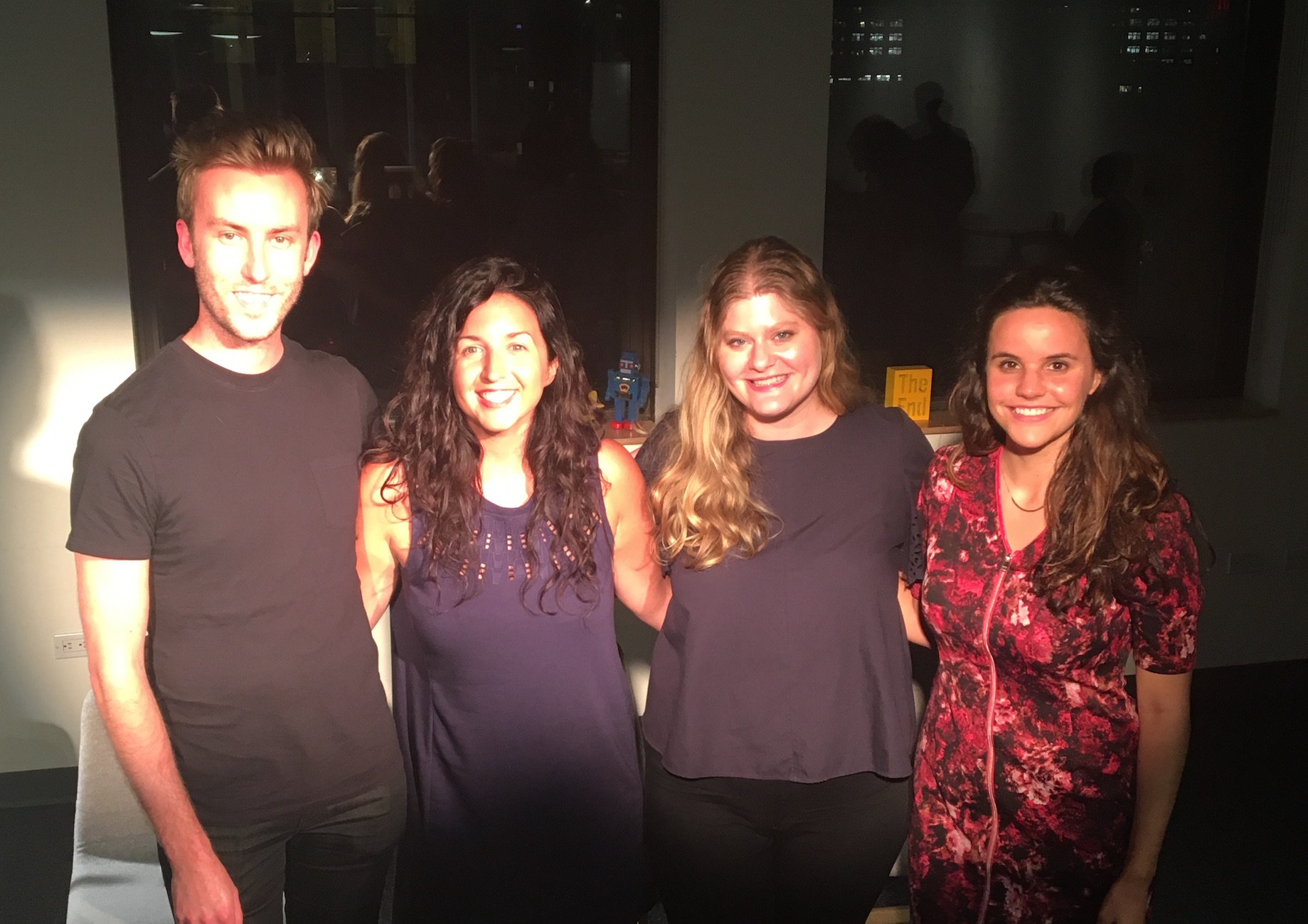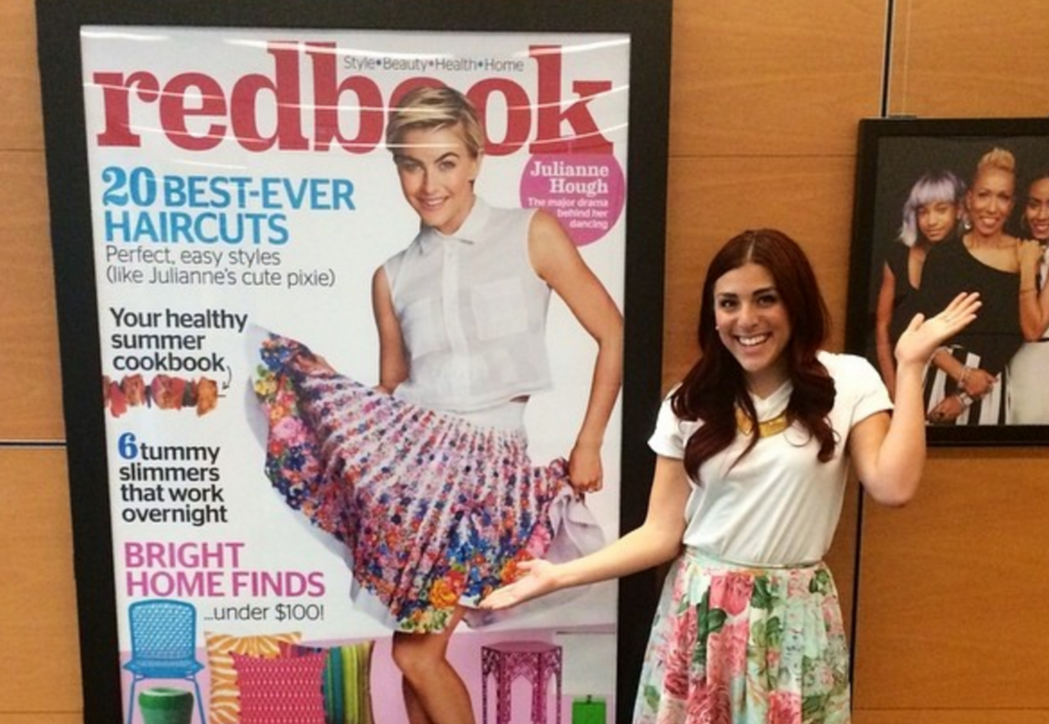By Bianca Mendez
Do you spend your days scrolling through endless Instagram feeds? Can you craft a snappy, witty tweet faster than it took you to read this sentence? Ed gathered the cream of the crop of social editors for a tell-all panel at the Wix Lounge. Editors Chris Rackliffe, director of social media and brand partnerships at Entertainment Weekly, Kristin Granero, manager, digital and social for HBO, Lindy Segal, style social media editor at People.com and Caitlin Scott, associate social media editor for Cosmopolitan.com, spilled the deets on how they scored their jobs, plus advice on how to be a rockstar in social media. Here are the highlights from Ed’s awesome event.
The Rise of Hashtags and Tweets
While it feels like Instagram and Twitter have been around forever, it’s a relatively new field. In fact, when some of these eds were fresh whippersnappers, social media barely existed! “There were no fan pages. Twitter just came out in my junior year of college. It wasn’t really something that brands were using, and people were still trying to figure out how to use the platforms themselves,” says Chris Rackliffe, director of social media and brand partnerships at Entertainment Weekly (and former Ed2010 Trust Fund winner, just sayin’). After completing a social media internship for Mermaid Inn in New York, Rackliffe realized that there was something about tweeting and connecting with fans. “I did put social media on my resume because I started recognizing that were brands that were starting to utilize it,” says Rackliffe.
Lindy Segal, style social media editor at People.com, scored her first social media job when she was asked to stay after her internship at Glamour ended. “They let go of their community manager because, at the time, Condé Nast was testing out having someone dedicated to social media. “I jumped at the opportunity because I wanted to stay as long as I could. I learned as much as I could in the three-week period, and finally they hired me!”
Know What the Fans Want
The cool thing about social media is that you stay in touch with your fans and see what they’re responding to. And all these panelists agree that if you want your brand to shine, listen to your followers. “We want to be the resource people are going to for the content they want,” says Kristin Granero, manager, digital and social for HBO. “If followers are sharing sayings from a specific episode and you haven’t created quote cards for that moment, do it.” “Because we’re the ones on the frontline seeing what people are saying and how they’re saying it, it gives us an opportunity to fan those flames,” adds Rackliffe, who mentions that EW’s fall T.V. preview issue cover for this month was voted by fans. “It’s not something we probably would have otherwise done, but we listened to the fans and they had a direct impact on the coverage that we did.”
Timing is Everything
“Timing, for the most part, is everything,” says Granero. “If there is a a key moment from an episode that people are talking about, sharing related content right then and there really makes a difference.” The same goes with capitalizing on key moments outside of a show (with caution). “If there’s a special event or holiday coming up, try to find a tie-in for your program. That is, as long as it makes sense. You hear these horror stories of brands jumping on a holiday or trending hashtag without having a good understanding of it and it does a lot of damage,” she shares.
Know Each Platform
Social media editors need to be savvy about their brand ‘s place in every platform. “Just because one post is good on Facebook, doesn’t mean it makes a good tweet,” says Rackliffe. Twitter and Facebook are most popular for sharing actual news and posts. For Twitter, I encourage my team to be very conversational and try to interpret a headline as if you were telling a friend about it. Facebook, you want to tease something, but not give it all away.” “We use Twitter as a testing ground before posting on Facebook,” says Caitlin Scott, associate social media editor for Cosmopolitan.com. At Cosmo for example, Instagram is a platform where the editors can have more fun. “One day we had a skeleton takeover where we made a day’s worth of skeleton memes, says Scott. “People had no idea what we were doing, but they loved it.”
Attention to Detail is a Plus
This goes for every editorial position, but when you’re writing short captions for a million followers, clean copy is a must. “I can’t tell you how many times I have judged a brand because they made a grammatical error,” says Granero. It sounds silly but [as a social media editor] you are, for many people, all they are seeing as the voice of the brand.”
Know the Brand Front to Back
“[At HBO], we have overarching styles, but I’m going to talk to a Girls audience differently than I am to a Veep audience,” says Granero. All the panelists agree that in order to speak like the brand, you need to be the brand. ” I can train anyone how to write a Tweet, but knowing the brand and reading the magazine, that’s something I can’t teach you to do,” says Rackliffe. Segal also suggests that an easy way to understand the voice is to review the publication’s social feeds from the last 24 hours. “They’re not going to do anything that is totally off brand.”
Lastly, it’s all about being a good writer to master a voice. “It will take a month or two to get used to, but I think any good writer can pick up on that,” says Scott.
Now, put these socially savvy tips into action and share your best mag life moments with Ed using #editorlife — we can’t wait to see what you’ve been up to!




 From Ed’s Guest Blogger: Three Things I Wish I Had Done Differently as an Intern
From Ed’s Guest Blogger: Three Things I Wish I Had Done Differently as an Intern